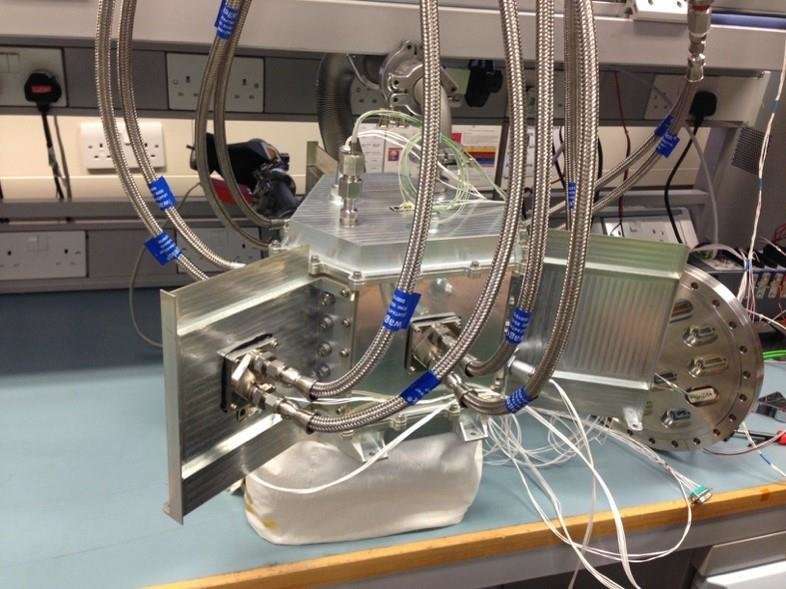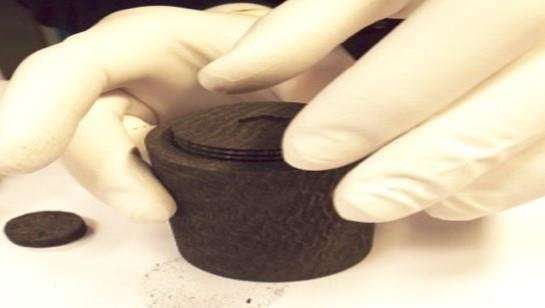Transforming space exploration

The University of Leicester is spearheading the development of new power generation technologies for space exploration as part of a European Space Agency funded programme.
Leicester is a global leader in the development of space nuclear power systems for electrical power generation,spacecraft heating and thermal management in the form of radioisotope thermoelectric generators (RTGs) and radioisotope heater units (RHUs).
Now, researchers from the Department of Physics and Astronomy's Space Research Centre have built the first prototype RTG and first RHU destined to utilise waste heat from americium-241. The University of Leicester led team has successfully built and tested 10 Watt RTG and 3 Watt RHU prototypes that use electrical heating to simulate the heat generated by an americium source.
Richard Ambrosi is Professor of Space Instrumentation & Space Nuclear Power Systems at the University of Leicester and is the project lead at the University.
He said: "In order to push forward the boundaries of space exploration, innovations in power generation,robotics, autonomous vehicles and advanced instrumentation are needed.
"Radioisotope power sources are an important technology for future European space exploration missions as their use would result in more capable spacecraft, and probes that can access distant, cold, dark and inhospitable environments.
"Missions using nuclear power offer greater versatility in challenging environments, with one mission delivering the science that might only be achieved from several missions using solar power, with considerably longer operational lifetimes (e.g.Voyager, Ulysses, Cassini). In many cases nuclear systems can enable missions that would otherwise be impossible."
National Nuclear Laboratory (NNL) is leading the production of americium-241 by chemical extraction from the UK's civil plutonium stocks, as well as the development of the americium fuel pellet form. NNL will provide the fuel for the powersystems being developed by the University of Leicester and partners.
The University of Leicester, together with Airbus Defence and Space Ltd, Queen Mary University of London,European Thermodynamics Ltd., Lockheed Martin UK and Fluid Gravity Engineering Ltd. have developed andtested a 10 Watt prototype of a radioisotope thermoelectric generator.

Designed to be fuelled by americium-241, the modular RTG will be able to generate up to 50 W of electrical power. This programme builds on the successful development and testing of a smaller scale 4 W lab-based RTG prototype.
European Thermodynamics Ltd. are involved in the development of the thermoelectric and thermal management technology in the project.
Technical Director Kevin Simpson said: "Products intended for space applications are designed to the highest possible specification. We look forward to developing further energy harvesting products and embedding this technology into terrestrial applications."
In addition, by working with Lockheed Martin UK, Johnson Matthey and National Nuclear Laboratory, Leicester have developed and tested a 3 Watt radioisotope heater unit prototype. This system is designed to keep spacecraft warm in challenging places.
Professor Ambrosi said the European space programme has focused on americium-241 and the UK has unique resources on which to build an independent European capability in space nuclear power in a cost effective and rapid programme.
Professor Ambrosi said: "Currently the focus is on two development projects aimed at scale-up of the laboratory systems to more flight-like experimental prototypes. In both cases, electrical heating is being used to enable development in the lab."
Tony Crawford, the member of the Leicester team responsible for assembly of the prototype, said: "As chief mechanical technician here at the Space Research Centre I am very happy and proud to be a part of this exciting space nuclear power program. With a small, very well motivated team we have used our experience in designing, testing and delivery of space flight hardware to build and test many configurations of RTG and RHUunits. With every successful step in the program we are an exciting step closer to producing a flight qualified unit."
Dr. Hugo Williams, the Engineering lead for the project, stressed some of the materials challenges presented by the project: "Space nuclear power presents some exciting materials challenges ranging from materials that must operate at very high temperatures and mechanical loads through to thermoelectric materials; smart material that converts the thermal energy to electrical energy. Development and characterisation of these materials have potential benefits in many other applications."
Energy harvesting from RHUs using thermoelectric conversion could offer an attractive option for smaller missions where small amounts of electrical power combined with heat sources could open a range of space exploration scenarios.
Professor Ambrosi added that improving the efficient storage and management of the power generated is a challenge that has parallels in terrestrial power generation. These will be essential elements in any future system designs.
Provided by University of Leicester





















